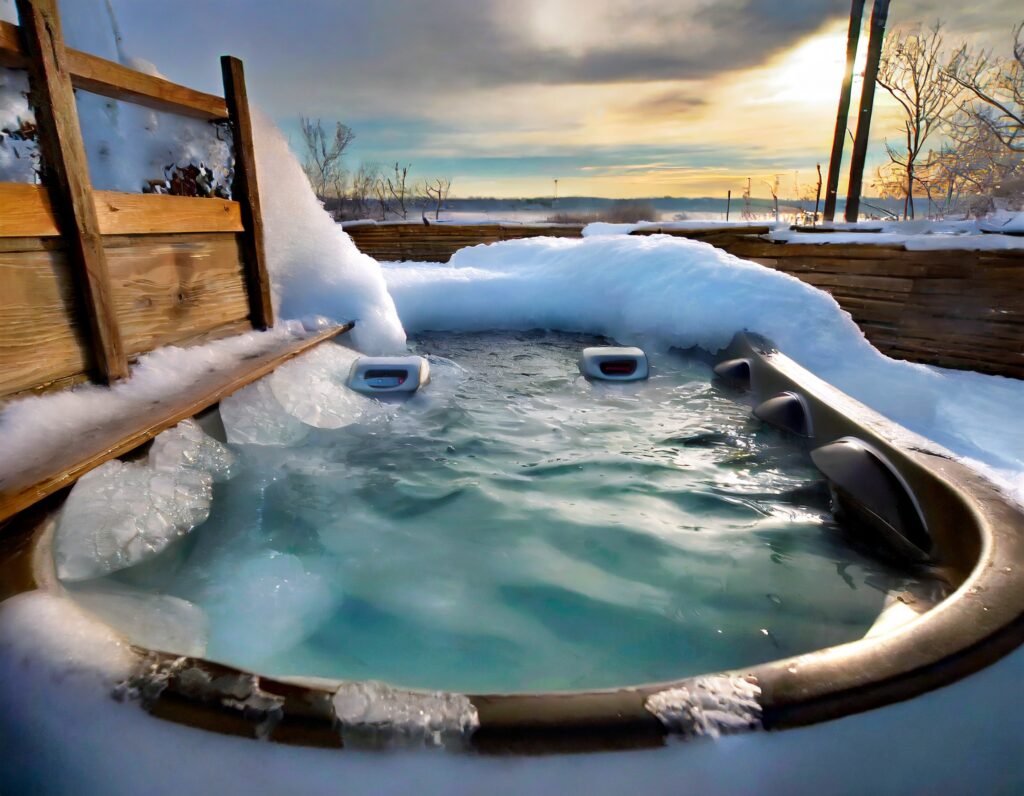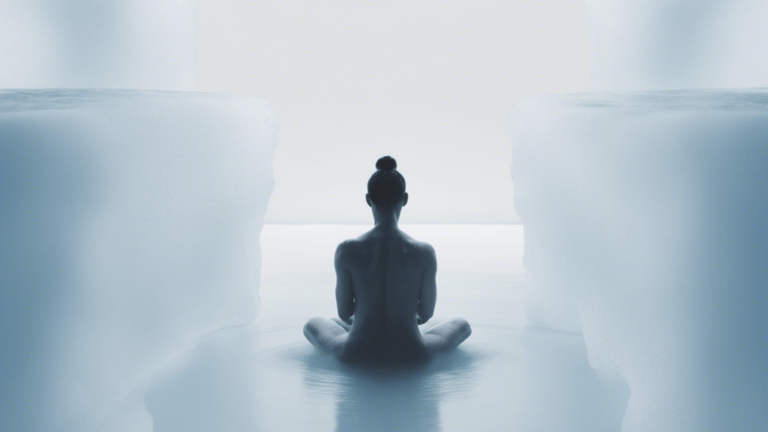Is it good to have an ice bath everyday?

You know the saying, “An ice bath a day keeps the doctor away.” Alright, maybe no one actually says that — I wonder why — the benefits of ice baths are remarkable.
Ask yourself: What do you feel when you think of a bath? Isn’t it a warm, soaking, and refreshing experience? Well, there is another type of bath that offers plenty of health benefits beyond just a refreshing experience — the ice bath.

So, what makes an ice bath unique?
In ice baths or ice bath therapy, you immerse your body in icy cold water for a duration between 10 and 20 minutes. You may have heard about ice baths before. The concept of ice baths isn’t new. For years, ice baths have been an essential part of the training programs of many elite athletes. But recently, we have seen people from all walks of life welcoming this practice into their wellness routine.
If you are also among those who recently adopted ice baths as part of your wellness routine, you might have multiple questions about ice baths in your mind. One of those questions might be, “Is it good to have an ice bath every day?” Or “What’s the ideal frequency of taking Ice baths?”
Opinions on the frequency of ice baths vary. Some believe that taking ice baths more frequently or daily will multiply the benefits. In contrast, others warn about the potential risks and downsides of ice baths. Between these two opposing opinions, you will find health experts and researchers emphasizing moderation in practicing ice baths.
In this article, we will answer your questions about the frequency of ice baths. But before that, we will use scientific studies to explore the health benefits of ice baths and their potential risks and downsides. This review will help you make an informed decision about having an ice bath every day.
Various Benefits of Ice Baths
The benefits of ice baths target various aspects of any health-conscious individual. These benefits range from recovery after intense physical activities to improved mental wellness. Let’s discuss each benefit of ice bath therapy and the science behind it.
Benefit 1: Improved Circulation
Improved circulation is one of the key benefits of ice baths. When you immerse your body in cold water, your body responds by causing vasoconstriction — the narrowing of blood vessels. Vasoconstriction reduces blood flow to the skin, and blood stays in your body’s core. This helps to maintain your core temperature.
After about 10 minutes of vasoconstriction, your body triggers vasodilation — dilation of blood vessels. This increases the blood supply to the hands and feet. The increased blood supply provides oxygen and nutrient-rich blood to the muscles while flushing the waste out of the muscles, working similarly to a pump. If you take ice baths regularly, the above changes in the body result in overall improved circulation.
Wim Hof
Wim Hof, also known as “The Iceman,” is a prime example of how regular ice baths can improve circulation. He can withstand freezing temperatures and cold exposure techniques like ice baths. With his remarkable skills and experiences, he is a live example of how one can achieve impressive physical milestones through this practice.
He teaches many people around the world about breathing and cold exposure techniques. You can join his classes if you are interested in his experiences and want to learn about his remarkable skills. If you succeed in reserving your seat for his classes, make sure to let us know about your experience.
Several scientific studies also show that cold water exposure can improve circulation. A study shows that improved circulation after ice baths helps flush muscle waste, such as lactic acid.
Hypertrophy
You must know that ice baths within 4 hours after training can reduce gains in hypertrophy, such as increased muscle mass or strength. To avoid limiting these gains, you should wait for about 6 to 8 hours after the training session before immersing yourself in a cold water bath. You can learn more about the use and science of cold exposure from this article by Huberman Lab.

Benefit 2: Reduced Inflammation and Quickened Recovery
One of the main reasons for ice baths’ popularity is their ability to reduce inflammation and quicken recovery after training sessions. When you sit in an ice bath after a workout, your body triggers constriction of blood vessels. This helps reduce swelling and inflammation in the muscles, promoting their faster recovery.
Many well-known athletes, such as LeBron James and Serena Williams, have spoken publicly about how ice baths help them recover after exercise. Many sports teams also incorporate ice baths into their training sessions for efficient recovery.
Scientific studies also provide evidence that ice baths can assist in recovery. A 2014 study shows that cold water immersion after exercises reduces muscle soreness, eliminates muscle fatigue, and reduces muscle damage.
Benefit 3: Enhanced Mood and Mental Toughness
Unexpectedly, the benefits of ice baths aren’t limited to physical health. They can also improve psychological health and mental wellness. Exposure to cold water is associated with releasing mood-boosting hormones, which means ice baths act as a healthy and natural way to uplift one’s mood.
In addition to the immediate mood boost, ice baths help you achieve mental toughness. It requires mental strength to willingly put yourself in freezing water. Regular practice of ice baths trains your mind to cope with the discomfort of cold water. Over time, it creates mental toughness and helps you deal with daily life stress and discomforts efficiently.
Scientific studies back the psychological benefits of ice baths. A 2023 study shows that cold water immersion triggers the release of mood-boosting hormones, including dopamine and endorphins. These hormones give you a sense of satisfaction and improve your mood and mental well-being.
Another study shows that building resilience to different triggers positively affects mental health and well-being. Similarly, by practicing ice baths regularly, you build resilience to cold which can improve mental well-being as well.
Studies also found that exposure to cold water reduces the symptoms of depression. It proves the idea that ice baths help create mental toughness.

Potential Risks and Drawbacks of Daily Ice Baths
While we have discussed the benefits of ice baths in detail, it is also important to discuss their potential risks and downsides. Knowing about potential risks will help you practice ice baths safely and effectively.
Risk 1: Hypothermia
While the concept of an ice bath seems adventurous, it is important to be aware of the potential risk of hypothermia. Hypothermia is a condition where the body’s temperature falls to a dangerously low level. It occurs when the temperature of the ice bath is too low, or you stay in the ice bath for a longer duration than recommended.
There are real-life examples of people suffering from hypothermia due to cold exposure, including ice baths. So, it is essential to realize that moderation is key to achieving the discussed benefits of ice baths. Pushing the limits too far can result in life-threatening conditions such as hypothermia.
You can prevent this risk by regulating the time and temperature of ice baths. Always start with a shorter duration and moderately cold temperature while monitoring your body’s response. This way, you can enjoy the benefits of ice baths with reduced risk of adverse effects.
Risk 2: Vasoconstriction and Related Risks
As discussed earlier in this article, your body responds to cold by initiating vasoconstriction. While vasoconstriction can improve circulation, it can also be risky for people with heart conditions. The sudden narrowing of blood vessels caused by ice baths can increase blood pressure. It will put stress on the already compromised heart and make the condition worse.
Scientific studies and experts also warn about the potential risks of cold exposure. We recommend that you consult your healthcare provider before incorporating ice baths into your routine. It will help minimize the risk of heart problems due to cold exposure, especially if you already have heart conditions.
Risk 3: Ice Bath Shock
Ice bath shock is an involuntary response of your body to a sudden cold exposure. When it happens, it increases your breathing and heart rate. It also increases the risk of hypothermia and, in rare cases, developing heart conditions.
Real-life examples of ice bath shock are common among beginners. Even experts sometimes feel this shock and abrupt changes in their bodies. It indicates that ice bath shock is a genuine risk, and you should be aware of it before practicing ice baths.
Remember the Golden Rule
The golden rule to remember here is “slow and steady wins the race.” Gradually expose your body to low temperatures, which will help your body build resilience against cold. If you are a beginner, always start with moderately cold water and a short duration. By adopting this approach, you will be able to enjoy the benefits of ice baths while keeping the potential risks significantly low.

Weighing the Benefits of Ice Baths Against the Risks
Now that we have discussed the benefits and potential risks of daily ice baths, we are in a position to answer our main question, “Is it good to have an ice bath every day?” To provide a calculated answer, we have to analyze the key points of our discussion. We have to weigh the benefits of ice baths against the risks to provide a balanced review.
Summarizing the Benefits of Ice Baths
Here is a summary of some key benefits of ice baths:
- Ice baths improve circulation, which is effective in recovery after intense workout sessions. Athletes who practice ice baths after workouts and games experience improved athletic performance.
- Ice baths reduce inflammation and boost muscle recovery. They reduce muscle soreness, eliminate fatigue, and lower the risk of muscle damage after physical activity.
- Ice baths trigger the release of mood-boosting hormones, which makes you feel good. In the long term, regular exposure to ice baths creates mental toughness and improves the ability to cope with everyday stressors.
Summarizing the Risks of Ice Baths
Here is a summary of some potential risks and downsides of ice baths:
- If you don’t follow the guidelines properly, ice baths can cause hypothermia. In this condition, your body temperature drops critically low, which can be life-threatening.
- Ice baths cause vasoconstriction, which can be risky for people suffering from heart conditions. Vasoconstriction increases blood pressure and heart rate, causing stress on the heart.
- Sudden exposure to ice baths can cause “ice bath shock,” especially in beginners. It is an involuntary response of the body against cold, where you experience increased breathing and heart rate. The complications of ice bath shock include hypothermia and heart conditions.
Final Verdict: Is it Good to Have an Ice Bath Every Day?
Comparing the benefits and risks of ice baths gave us a detailed idea of what to expect from a daily ice bath. So what can be the answer to our question, “Is it good to have an ice bath every day?”
We conclude that there is no single answer to this question that applies to everyone. It is because we all vary in our genetic makeup, body type, and tolerance level. Whether daily ice baths benefit you depends on your health status, lifestyle, tolerance, and how safely you practice it.
If you follow the recommended guidelines, such as gradually exposing your body to cold, ice baths can be an impressive addition to your wellness routine. Remember, moderation is key. Give your body the time to build resilience against cold exposure, and always listen to your body’s response.







